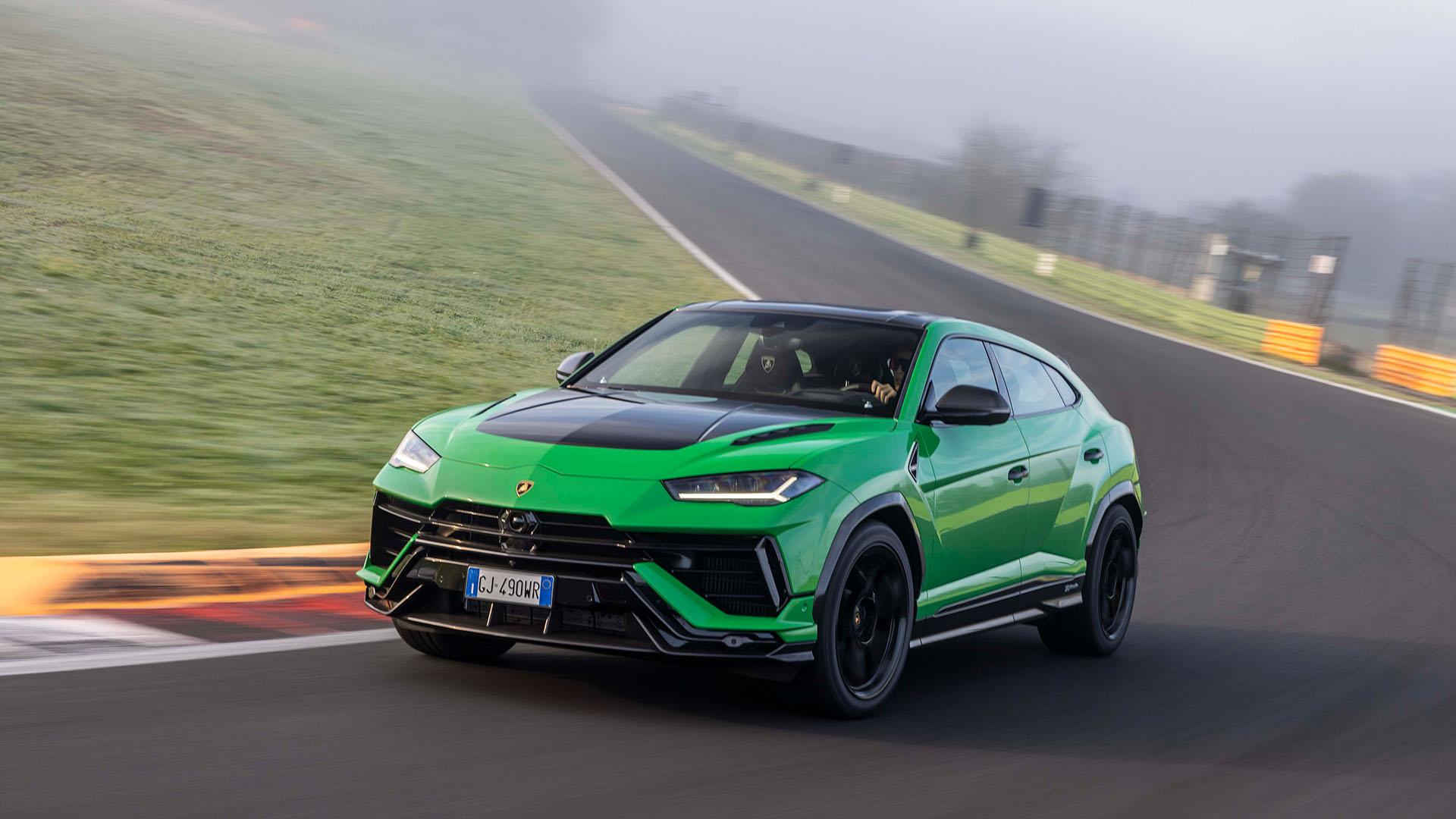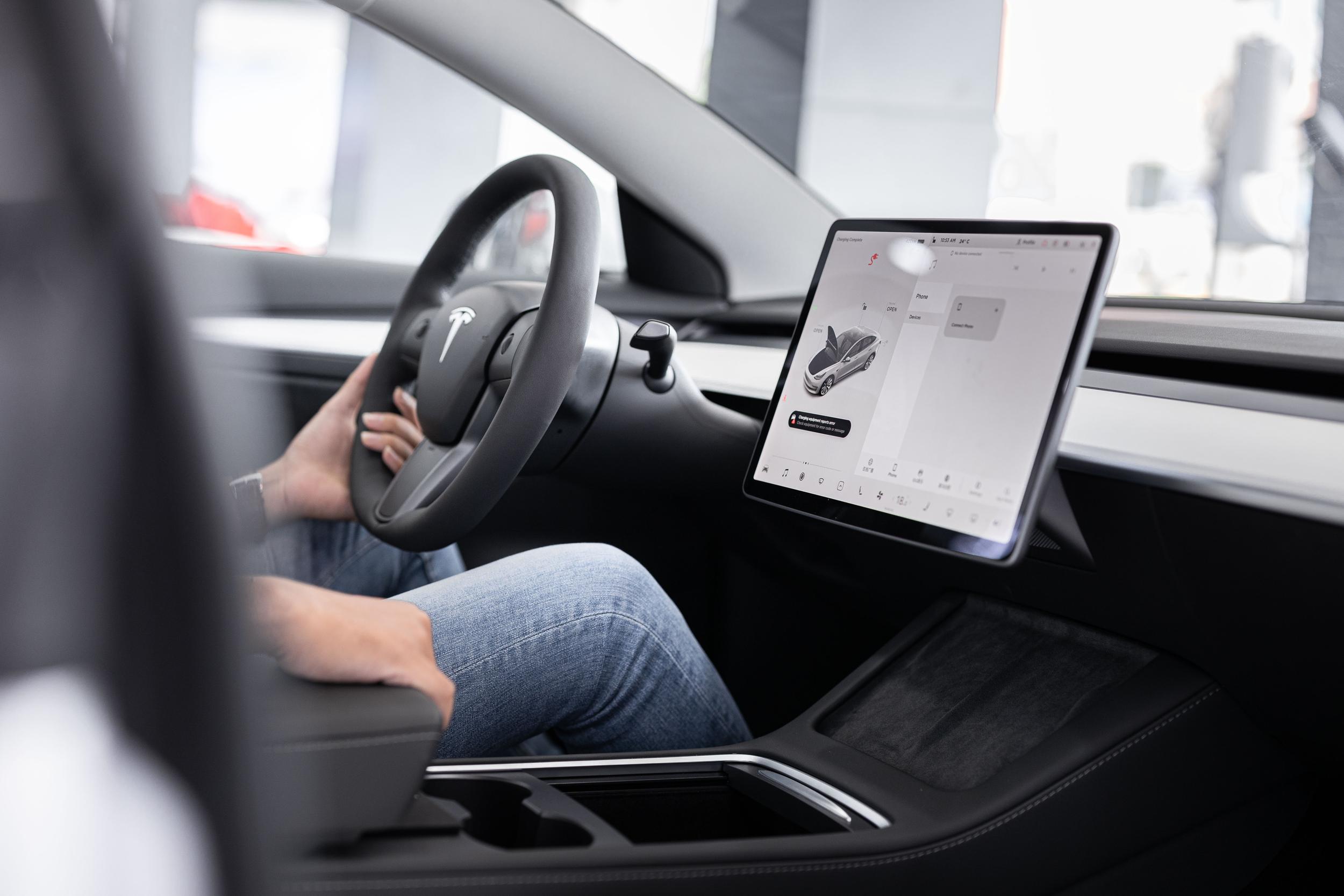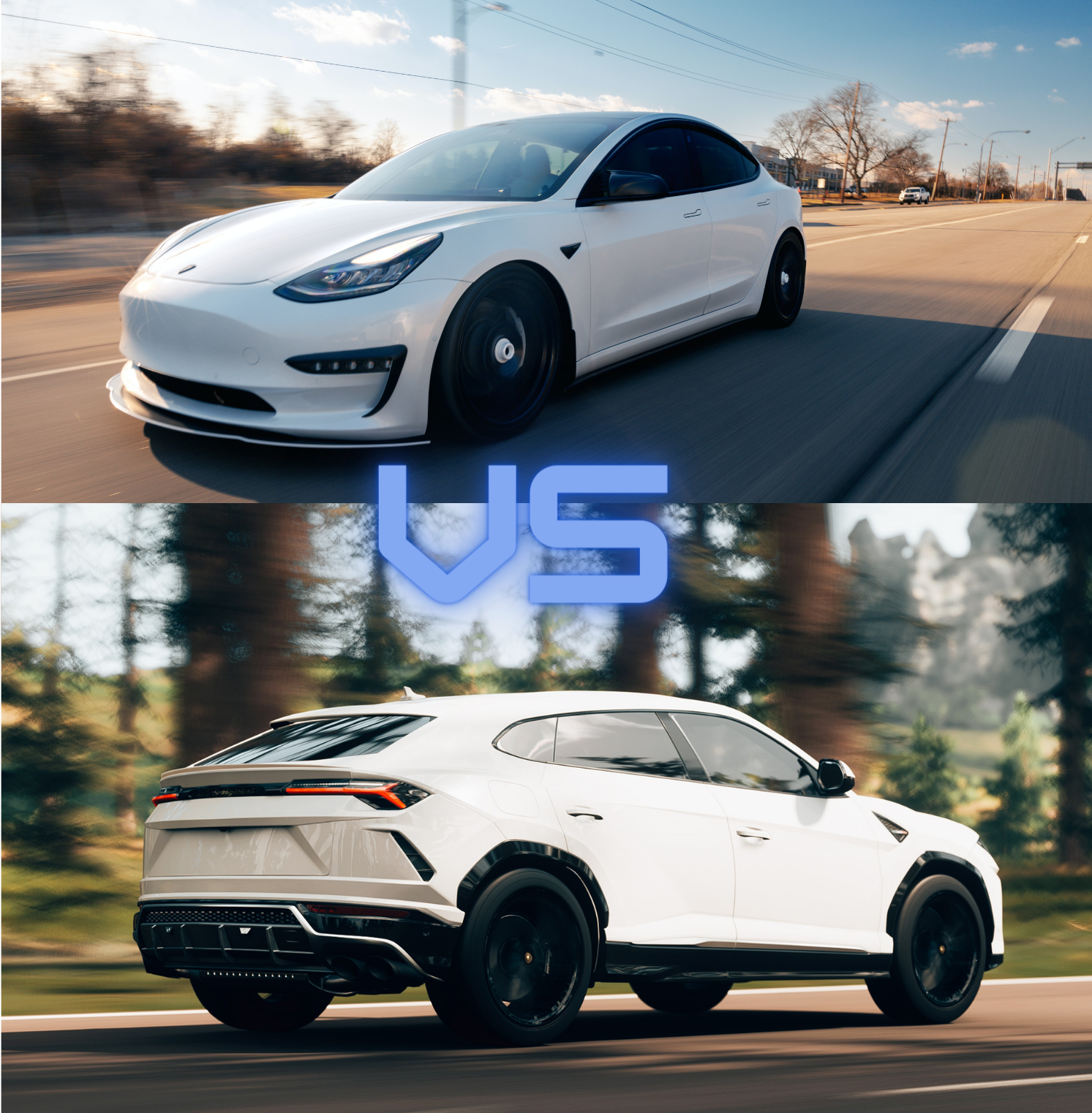To car enthusiasts around the world, the mere mention of Lamborghini brings to mind images of sharp, aerodynamic designs, the roar of a powerful engine, and breathtaking speed. On the other hand, Tesla evokes a different reaction. Sleek electric sedans, the hum of an electric motor, cutting-edge technology, and, of course, their reputation for quick acceleration. But when it comes down to it, is a Tesla truly faster than a Lamborghini? Let’s delve into the specifics.
Before diving into numbers and models, it’s important to define what ‘fast’ means. Are we looking at 0-60 mph acceleration times? Top speeds? Lap times on a racetrack? Each metric can yield a different victor.
Acceleration: The 0-60 Sprint
Acceleration, particularly the 0-60 mph time, is a widely recognized metric for automotive performance. This specific range offers a tangible sense of a car’s raw power and responsiveness in everyday scenarios, from launching at a traffic light to merging onto a highway.
Tesla’s Prowess
![]()
Enter the Tesla Model S Plaid, an electric juggernaut in the world of acceleration. It has been recorded to sprint from 0-60 mph in under 2 seconds, a feat that places it among the elite in the automotive world. This remarkable acceleration is attributed to a few key factors:
- Instantaneous Torque: Electric motors, unlike internal combustion engines, provide immediate torque from a standstill. This means there’s no need to rev up the engine or wait for the turbocharger; the power is instantaneously on tap.
- All-Wheel Drive: The Model S Plaid utilizes multiple electric motors for an all-wheel-drive system. This ensures maximum traction, reducing wheel slip and providing an incredible launch.
- Sophisticated Traction Control: With advanced sensors and software algorithms, Tesla’s traction control system can optimize power delivery to each wheel, ensuring the quickest possible acceleration without losing grip.
Lamborghini’s Heritage

Lamborghini, a name synonymous with performance and luxury, hasn’t reached its esteemed status without mastering the art of acceleration. Take, for instance, the Lamborghini Aventador SVJ, which boasts a 0-60 mph time of 2.8 seconds. While this might not match the Tesla’s figures on paper, the Aventador’s acceleration comes with an experience that’s hard to quantify:
- High-Reving Engine: The Aventador’s naturally aspirated V12 engine delivers power in a progressive, linear manner, allowing drivers to feel the surge of power as they climb the rev range.
- Aural Experience: Part of the thrill of driving a Lamborghini is the soundtrack. The roar, growl, and eventual scream of the V12 is an auditory experience that complements the physical sensation of acceleration.
- Aerodynamics and Grip: The Aventador SVJ, with its advanced aero design, channels air to improve downforce and grip, allowing the supercar to harness its horsepower effectively when launching.
| Brand & Model | 0-60 mph Time (seconds) |
| Tesla: | |
| Model S Plaid | ~1.98 |
| Model S Performance (prior to Plaid) | ~2.3 |
| Model X Plaid | ~2.5 |
| Model 3 Performance | ~3.1 |
| Model Y Performance | ~3.5 |
| Lamborghini: | |
| Aventador SVJ | ~2.8 |
| Huracán Performante | ~2.9 |
| Huracán EVO | ~2.9 |
| Urus | ~3.2 |
| Aventador S | ~2.9 |
Top Speed: Hitting the Limits
Top speed has long been a benchmark for high-performance cars. It’s a metric that exemplifies a vehicle’s engineering prowess, aerodynamic efficiency, and ability to maintain stability at extreme velocities. Let’s navigate deeper into this domain, comparing the engineering marvels of Tesla and Lamborghini.
Tesla’s Electrifying Approach
The Tesla Model S Plaid, as previously mentioned, reaches an electronically limited top speed of around 200 mph. But why this limit? Let’s decode:
- Battery and Heat Management: Electric vehicles generate heat, especially when pushing for higher speeds. Sustained high speeds can result in the battery and electric motors heating up, potentially impacting performance or lifespan. The electronic limit ensures the components operate within safe parameters.
- Aerodynamic Design: While the Model S is designed to be aerodynamically efficient, aiding in longer battery range and better stability, it is primarily a luxury sedan, not a hypercar. Thus, its body design, while sleek, might not be optimized solely for top-speed performance.
- Range and Efficiency: Tesla vehicles, being electric, always need to strike a balance between speed and range. While they could potentially go faster, the drain on the battery would be substantial, reducing the overall range.
Lamborghini’s Legacy of Speed
The Lamborghini Aventador SVJ, one of the brand’s pinnacle models, has a top speed of about 217 mph. Such speed is not merely about raw power; it’s an art that Lamborghini has been perfecting for decades.
- Engine Power and Dynamics: The naturally aspirated V12 engine not only delivers a staggering amount of horsepower but does so in a way that allows for sustained high speeds. The lack of turbos means there’s no turbo lag, ensuring a consistent power delivery.
- Aerodynamics and ALA System: The Aventador SVJ is equipped with Lamborghini’s Aerodinamica Lamborghini Attiva (ALA) system. This active aerodynamics technology adjusts in real-time, optimizing downforce and drag depending on the driving conditions, thus enabling higher top speeds while maintaining stability.
- Materials and Stability: The use of lightweight materials, such as carbon fiber, combined with a low center of gravity and wide stance, ensures the car remains stable and grounded even at its top speed.
| Brand & Model | Top Speed (mph) |
| Tesla: | |
| Model S Plaid | ~200 |
| Model S Performance (prior to Plaid) | ~163 |
| Model X Plaid | ~163 |
| Model 3 Performance | ~162 |
| Model Y Performance | ~155 |
| Lamborghini: | |
| Aventador SVJ | ~217 |
| Huracán Performante | ~202 |
| Huracán EVO | ~202 |
| Urus | ~190 |
| Aventador S | ~217 |
Tesla vs Lamborghini 1/4 mile
| Brand & Model | 1/4 Mile Time (seconds) |
|---|---|
| Tesla: | |
| Model S Plaid | ~9.23 |
| Model S Performance (prior to Plaid) | ~10.4 |
| Model X Plaid | ~9.9 |
| Model 3 Performance | ~11.5 |
| Model Y Performance | ~11.9 |
| Lamborghini: | |
| Aventador SVJ | ~10.3 |
| Huracán Performante | ~10.2 |
| Huracán EVO | ~10.4 |
| Urus | ~11.3 |
| Aventador S | ~10.5 |
Track Performance: More than Just Speed
While straight-line speed is a primary fascination for many enthusiasts, true car aficionados recognize that track performance paints a fuller picture of a car’s capabilities. On a racetrack, aspects like handling, braking, balance, and the car’s ability to corner at high speeds become paramount. Let’s steer deeper into how Tesla and Lamborghini perform when let loose on a track.
Tesla’s Electric Elegance

The Tesla Model S Plaid is an embodiment of modern automotive tech, translating electric power into formidable track performance. Here’s how it fares:
- Torque Vectoring: One advantage electric vehicles have on track scenarios is the ability to control torque distribution to individual wheels with utmost precision. This, combined with the low center of gravity due to battery placement, offers exceptional handling, especially during tight cornering.
- Regenerative Braking: Tesla’s regenerative braking system can recover energy when decelerating, but on the track, it also aids in providing consistent braking performance, essential for those sharp corners.
- Weight Considerations: The Model S Plaid, while powerful, is also heavier than many track-oriented cars, primarily due to its battery packs. This weight can be a challenge in prolonged track sessions, affecting tire wear and overall agility.
Lamborghini’s Racetrack Mastery
![]()
With a storied history in motorsports, Lamborghini’s supercars are no strangers to the racetrack. The experience is as follows:
- Dynamic Steering: Lamborghini models like the Huracán Performante are equipped with Lamborghini Dynamic Steering, adjusting the steering ratio in real-time based on speed and driving mode. This ensures optimal responsiveness and control during high-speed laps.
- Aero Dynamics: Lamborghini’s expertise in aerodynamics shines on the track. The aforementioned ALA system, for instance, plays a significant role, adjusting aerodynamic elements on the fly for optimal downforce or reduced drag, depending on the need.
- Engine Response and Sound: Beyond just speed, the experience of a Lamborghini on a track is heightened by the engine’s response. The immediate throttle feedback of a naturally aspirated V12 or V10, coupled with the exhilarating soundtrack, adds an emotional depth to the track day.
The Underlying Mechanics
Behind every car’s performance lie the intricate mechanics that breathe life into it. For Tesla and Lamborghini, the approach to these mechanics comes from different visions, historical contexts, and technological paradigms. By understanding these core mechanics, we gain insight into what makes each vehicle not just move, but truly come alive.
Tesla’s Electrical Symphony
When you lift the hood of a Tesla, you’re not greeted by the familiar sight of an internal combustion engine. Instead, its soul is woven with electrical components.
- Electric Motors: Tesla’s powerhouses are its electric motors, which can provide instantaneous torque from zero RPM. This leads to that sudden burst of acceleration, a hallmark of electric vehicles. The lack of a traditional transmission means there’s a seamless transition of power, making acceleration feel buttery smooth.
- Battery Technology: At the core of every Tesla is its high-density lithium-ion battery pack. Over the years, Tesla has refined its battery tech for longevity, range, and performance. The positioning of the battery pack, typically low and centered, also contributes to the vehicle’s balanced weight distribution, affecting handling and stability.
- Software Integration: An often-overlooked aspect of Tesla’s mechanics is its software. Advanced algorithms control everything from power distribution to energy recovery, ensuring optimal performance, safety, and efficiency.
Lamborghini’s Mechanical Ballet
A Lamborghini, on the other hand, is a testament to the beauty and power of internal combustion, coupled with years of engineering evolution.
- Engines: Lamborghini’s beating heart is its engine, with the V10s and V12s being particularly iconic. These engines, especially in their naturally aspirated forms, offer linear power delivery. This means as the RPM rises, power increases steadily, giving drivers precise control and an unmistakable auditory experience.
- Transmission Systems: Lamborghini employs sophisticated transmission systems that provide rapid gear shifts, ensuring the engine remains in its optimal power band. For instance, the ISR (Independent Shifting Rod) transmission in the Aventador provides gear shifts in mere milliseconds.
- Chassis and Suspension: Lamborghinis are crafted with attention to their chassis and suspension systems. Using materials like carbon fiber and advanced alloys, the vehicles achieve a balance of lightweight construction and structural rigidity. The suspension system, often adjustable, ensures that the car remains planted on the road or track, adapting to varying conditions.
The Evolution of Performance
While Lamborghini has decades of performance evolution under its belt, Tesla is comparatively new to the scene. However, Tesla’s advancements in electric vehicle technology have been both rapid and revolutionary. The performance metrics of electric cars have improved drastically in just a few years, thanks to Tesla’s continuous innovations.
Tesla vs. Lamborghini Price
| Brand & Model | Starting Price (USD) |
|---|---|
| Tesla: | |
| Model S Plaid | ~$129,990 |
| Model S Long Range | ~$79,990 |
| Model 3 Standard Range Plus | ~$37,990 |
| Model 3 Performance | ~$55,990 |
| Model X Plaid | ~$119,990 |
| Model X Long Range | ~$89,990 |
| Model Y Long Range | ~$52,990 |
| Model Y Performance | ~$60,990 |
| Lamborghini: | |
| Aventador SVJ | ~$517,770 |
| Huracán EVO | ~$208,571 |
| Huracán EVO Spyder | ~$229,428 |
| Urus | ~$218,009 |
| Aventador S | ~$417,650 |
Conclusion
The debate over whether a Tesla is faster than a Lamborghini isn’t a straightforward one. While Tesla’s electric models might edge out in terms of acceleration, Lamborghini’s supercars still reign supreme in other areas, like top speed and track performance. At the end of the day, ‘fast’ is not just about numbers. It’s about the experience, the technology, the innovation, and the emotion that a car evokes. Both brands, in their own unique ways, are masters of their craft, offering exhilarating experiences for those behind the wheel.



